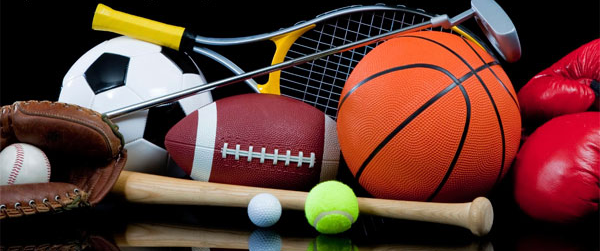Maloney v. T3Media Inc: Student-Athlete Right of Publicity Claims Preempted by the Copyright Act
April 11, 2017The NCAA Committee on Infractions Has Spoken: University of Virginia
April 14, 2017The NCAA Committee on Infractions (“Committee” or “Panel”) recently issued its findings and found that the University of Virginia (“UVA” or “Institution”) committed violations of NCAA legislation. This case involved a recruiting violation committed by multiple members of the football coaching staff at UVA. The Panel considered this case through the cooperative summary disposition process in which all parties agreed to the primary facts and violations, as fully set forth in the summary disposition report (“SDR”). The Panel proposed additional penalties to the Institution. Because the Institution agreed to the violation and penalties, there is no opportunity to appeal.
The Committee concluded that UVA committed the following violations:
Violations of NCAA Division I Manual Bylaws 13.02.5.2, 13.1.1.1 and 13.17.4.1 (2015-16) (Level II)
It is alleged that from April 28, 2016, through May 6, 2016, seven (7) members of the football coaching staff engaged in in-person, off-campus recruiting contacts with 32 football prospective student-athletes even though it was an evaluation period and such contacts were prohibited. Specifically, seven assistant football coaches had direct, face-to-face contact with the prospective student-athletes at their educational institutions, and had their photograph taken while standing next to the prospective student-athletes to validate their height and weight. NCAA Bylaws 13.02.5.2, 13.1.1.1 and 13.17.4.1 (2015-16).
Bylaw 13.02.5.2 prohibits in-person, off-campus recruiting contacts during an evaluation period. The bylaw defines an evaluation period as a time when it is permissible for authorized athletics department staff members to participate in off-campus activities to assess prospects’ academic qualifications and playing ability. Bylaw 13.1.1.1 precludes any contact with prospects prior to the end of their junior year of high school. Bylaw 13.17.4.1 establishes the recruiting calendar for bowl subdivision football. Of particular relevance to this case, the bylaw identifies April 15 through May 31 as an evaluation period.
The violation in this case occurred when the Institution’s newly-hired football staff decided to begin personally verifying the height and weight of position-specific prospects before extending scholarship offers to them. The staff made this decision in early 2016 after previously relying on third-party verification of a particular prospect’s height and weight, only to find when he arrived on campus that he was much smaller than expected. By that point, the staff had already extended a scholarship offer to the prospect. To avoid a recurrence of this situation, the staff decided to pose for photographs standing next to prospects in order to personally verify their height and weight. Thus, during the spring 2016 evaluation period, seven members of the coaching staff posed for photographs with a total of 32 prospects at 23 high schools. They distributed the photographs to other members of the football coaching staff via a group text message. The coaches engaged in this conduct from April 28, 2016, to May 6, 2016. They thought this direct, face-to-face contact was permissible because in their opinion it did not extend their interactions with the prospects beyond a standard greeting. The coaching staff was mistaken in this understanding.
By posing for photographs with these 32 prospects at their high schools prior to the end of the prospects’ junior year, the coaching staff engaged in in-person, off-campus contacts during an evaluation period. The parties agreed, and the Panel concluded, that these were impermissible contacts in violation of NCAA Bylaws 13.02.5.2, 13.1.1.1 and 13.17.4.1.
Pursuant to Bylaw 19.1.2, the Panel concluded that the violation in this case is Level II because it provided, or was intended to provide, more than a minimal recruiting advantage. The Committee has previously recognized that even fleeting face-to-face encounters during non-contact periods confer an unfair advantage on the institutions who engage in them. See Baylor University (2016) (concluding that two assistant football coaches’ brief, “fan-like” exchanges with a prospect during an evaluation period constituted a Level II violation because the contact allowed the coaches to demonstrate their high regard for the prospect and establish a relationship with him); University of Florida (2015) (concluding that a single impermissible contact was a Level II violation because in-person contacts help build relationships that are critical to recruiting and thus provide an advantage over institutions who are not engaging in such contacts). Here, the contact with the prospects, however brief, allowed the coaches to assess and demonstrate their interest in the prospects and thus gave the Institution an advantage over other institutions who were abiding by the rules of the non-contact period. This constitutes a Level II violation.
Aggravating and Mitigating Factors in accordance with NCAA Bylaws 19.9.3 and 19.9.4
Aggravating Factors for the Institution
None.
Mitigating Factors for the Institution
(1) Prompt self-detection and self-disclosure of the violation(s). NCAA Bylaw 19.9.4-(a).
(2) Prompt acknowledgement of the violation(s), acceptance of responsibility and imposition of meaningful corrective measures and/or penalties. NCAA Bylaw 19.9.4-(b).
(3) An established history of self-reporting Level III or secondary violations. NCAA Bylaw 19.9.4-(d).
(4) Implementation of a system of compliance methods designed to ensure rules compliance and satisfaction of institutional/coaches’ control standards. NCAA Bylaw 19.9.4-(e).
As a result of the foregoing, the Committee penalized UVA as follows:
1. Public reprimand and censure.
2. The Institution shall pay a $5,000 fine.
3. A two-for-one reduction in permissible contacts with each prospective football student-athlete during the next contact period following the release of this infractions decision.
4. A two-for-one (18-recruiting day) reduction in the number of days available for the spring 2017 evaluation period.
5. Rules education for the Institution’s football coaching staff regarding the “bump” rule and evaluation period, with the Institution providing documentation to the Office of the Committee on Infractions confirming completion of this rules education. Such documentation may include attendance lists and any materials presented during the educational session(s).
For any questions, feel free to contact Christian Dennie at cdennie@bgsfirm.com.

